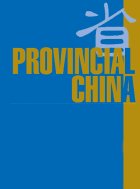 |
|
| Gegeental grassland tourist attraction: stone wall, glass door, cement roof of Mongol yurts, and Chinese style soy sauce and vinegar bottles left on the dinning table testify the exploitation and commercialization of Mongolian culture by the Chinese. |
Despite being ethnically connected to millions in the rest of the world, Mongol culture and tradition are, they feel, threatened by China.
Jawaharlal Nehru called them the single most dominant race in the history of the world. Their empire, the largest ever conceived, stretched over millions of kilometres from modern-day Vietnam to Hungary. Nations and races knelt to their supremacy: their political, social, religious and commercial advances have helped shape the world we live in: and according to genetic evidence, one in every 200 men alive today is related to their greatest leader. Yet, today, the still-proud Mongol race lives under constant threat of seeing its culture, religion and traditions further eroded.
Spread across the Mongolian Republic, the politically-independent Buryatia in Russia and the Inner Mongolia Autonomous Region in China, the Mongols do not appear at first glance to be struggling culturally. In Inner Mongolia, most street signs appear in both scripts, the Mongol tongue is heard very frequently and images of Genghis Khan compete with those of Chairman Mao to take pride of place in living rooms.
However, underneath this well-orchestrated facade, designed to fit the Communist party's vision of ethnic minorities living happily intermingled with Han Chinese, many Mongols still feel that they are slowly losing their grip on their culture and traditional ways of life.
In common with much of China's sparsely-populated regions in the1960s and 70s, Inner Mongolia saw vast influxes of Han settlers come in to make full use of the land, in line with Mao's hopes for a self-sufficient China. While the sheer size of Inner Mongolia could have comfortably accommodated a reasonable number of new arrivals, Chinas staggering population has seen the Mongol presence drop in the region from over 60% half a century ago to a lowly 15%. The arrival of so many outsiders forced the Mongols up into the steppes to the north of the capital, Hohhot, and stretching northeast towards the Russian border.
This in itself could have made for a wonderful commercial opportunity for enterprising Mongol farmers. After Deng Xiaoping's opening up of China, the Mongolian grasslands became a prime tourist spot for affluent Chinese and foreigners seeking to gain a cheap thrill in the surroundings that once formed the nexus of the Khans great conquests. Unfortunately, there again, the Han Chinese would have the advantage.
Magnai, a rare successful Mongol guide on the Gegentala grasslands, says: It is getting more and more difficult for Mongols to make any real money in the tourist industry. The Chinese control the tourist camps, the hotels and the travel agencies.
Magnai offers two-day excursions to the grasslands to stay with real Mongol farming communities, an experience he swears is much more authentic than the Chinese-run camps. This is a fact which he laments is of little importance to tourist crowds from Beijing.
Of perhaps greater damage to the remnants of the Mongol culture in China is the perfidy of the Inner Mongolia local government in subverting elements of this culture for profit. As mentioned above, Genghis Khans legacy lives on across Mongolia, but his primary impact today is that of filling the coffers of other governmental agencies. On the Ordos plateau lies one of the region's prime tourist draws, a mausoleum and museum claiming to be the last resting-place of the great emperor. Steering away from the historical, cultural or proven, the Ordos mausoleum contains a smattering of relics and reconstructed yurts centred around a colossal statue of the Khan " as if marking his tomb. Nevertheless, the very existence of this museum is apocryphal since historical records seem to state no known burial spot for Genghis Khan, who as he lay dying, reportedly asked to be strapped to his horse, sent out into the desert, and buried where his horse collapsed. The mausoleum prones another version, saying that the Khan was so struck by Ordos beauty while riding through it that he dropped his horsewhip, and later asked to be buried there.
Back in Magnai's home in Gegentala, the true dichotomy at the heart of Inner Mongolia can be observed by looking at his bookshelf, where a picture of the Khan dominates the room. A further glance reveals a statuette of Chairman Mao set on a middle shelf and off to the side, placed there as a seeming cursory acknowledgement to the Peoples Republic of China.
Although the struggle for independence in Inner Mongolia has gained far-less attention than those in Xinjiang or Tibet, the Inner Mongolian People's Party (IMPP) is doing their best to make their cause known. 2007 marks the 60th anniversary of the Inner Mongolia Autonomous Region, although for the decade-long Cultural Revolution, it effectively ceased to exist since it was fractured between more Han-dominant provinces.
The Communist party (CPC) is celebrating these 60 years of "revolution and sweeping changes", an attitude thrown into sharp relief by the IMPPs denunciation of the anniversary as a further opportunity for China to comprehensively cleanse the area of Mongol culture. They denounce the arrival of over 15 million Han Chinese in Mongolia, utterly skewing the balance of opportunities for Mongols and causing irreparable damage to the environment and resources of Southern Mongolia (the IMPP name for the Inner Mongolia Autonomous Region).
The IMPP, led by founding activist Temstiltu Shobtsood, are not shy about raining accusations down that the Mongol race stands on the brink of oblivion in Inner Mongolia, naming their press release about the 60th anniversary of the region, "A Road to Extinction".
While their claims may be somewhat inflated, there is little doubt that Mongol culture is reeling. Mao's desire to populate every area of China with Han and to keep ethnic minorities as tourist draws and quirky little footnotes in China's epic journey has largely been successful. The Han hegemony is present in Hohhot, Baotou, and every major Inner Mongolian city. Many Inner Mongolians, deprived of visa rights, are sneaking into the Republic of Mongolia to seek better lives and jobs. The gulf between Chinese and Mongol that caused the building of the Great Wall and arguably set Genghis Khan off on his world conquest is getting wider, not closer.
As Magnai quips as we walk through the streets of Hohhot: "The Chinese even call the city of Hohhot, the 'green city'. In Mongol, it means the 'blue city' to celebrate our adoration of the sky. Tell me, can you see anything green here?"







